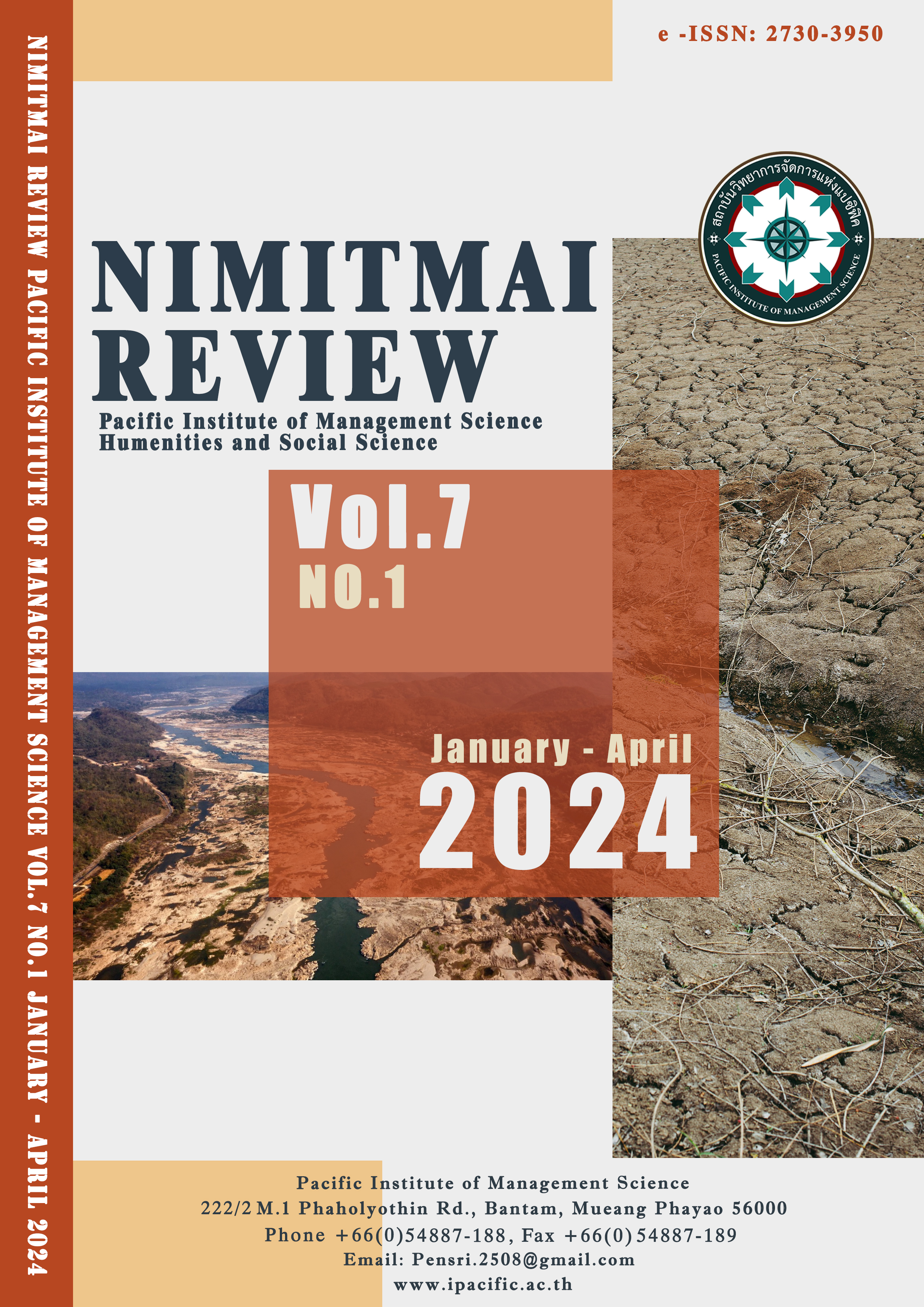Psychological Crisis of systematic Analysis and Management Strategy of University in Shandong of Chaina
Abstract
This Article aimed to study psychological crisis of systematic analysis and management strategy of university in Shandong of China. A target population of 134,580 college students studying in six universities in Yantai, Shandong Province was selected. A purposive sampling method was used to draw a sample of 439 according to the formula of Yamane equation, and the instrument used to collect data was a questionnaire. In this paper, a quantitative study was conducted using questionnaires. The tools used for the analysis were demographics, correlation analysis and AMOSS.26 analysis. Results: stressful life events (57.88 ± 20.58), psychological vulnerability (49.68 ± 13.87), psychological crisis ((10.2 ± 10.07), total score of stressful life events was positively correlated with psychological crisis performance score (r=0.605, p<0.05) and with total score of psychological vulnerability (r=0.0.735, p< 0.05); psychological The total psychological vulnerability score was positively correlated with the psychological crisis performance score (r = 0.716, P<0.05). Psychological vulnerability partially mediated the relationship between life events and psychological crisis, with a partial mediation effect of 0.301, accounting for 71.32% of the total effect. Conclusion Stressful life events can have both a direct effect on psychological crisis of college students and an indirect effect on psychological crisis through the level of psychological vulnerability. We should actively pay attention to the effects of stressful life experiences on college students' psychological well-being, reduce the sources of stressful crises, strengthen mental health education, and adopt suitable Strategy for psychological crisis management in colleges and universities. it can be concluded that the factors that cause the psychological crisis of Shandong college students in China mainly include four aspects. 1. Personal reasons 2. Family factors:3. School factors 4. Social factors.
References
Caplan G.(1970).The theory and practice of mental health consultation.New York: Basic. 18-19.
Daoming. C.(2006).Analysis of College Students' Psychological Crisis and Intervention Strategies under the Background of Modern Societ. Education Exploration, 2006.4.
Eplov LF, et al. (2005). Mental vulnerability as a predictor of early mortality. Epidemiology, 16(2): 226 -232.
Hongsu, Y.et al .(2017). The mediating effect of reason for living on life events and suicide risk and the regulating effect of mindfulness.Chinese Public Health, 33(11). 1624-1627.
Haiyan. Z.(2008). Preparing for rainy tim-College students' psychological crisis self-help. Beijing: Higher Education Press.
Hong, Z. et al (2010). Research on the Vulnerability of College Students' Psychological Crisis and Self-correlation. Journal of Ningbo University (Educational Science Edition),32 (6): 96 - 99.
Jess P, et al.(1998) Neuroticism in relation to recovery and persisting pain after laparoscopic cholecystectomy. Scandinavian Journal of Gastroenterology, 33(5): 550 - 553.
Jia Z..,(2009) Investigation Report on Negative Life Events of College Students. Journal of Hetao University, 6(03):97-101.
Kwon J H,et al (2011).The effects of escape from self and interpersonal relationship on the pathological use of Internet games.Commun Ment Health Journal,2011,47( 1), 113-121.
Shu C. et al.(2016). Analysis on the change of mental health status of freshmen in a higher vocational college.Chinese School Health, 37(11),1725-1727.
Suhua.G.(2018). Quantitative comprehensive analysis of the relationship between life events and mental health of Chinese college student. Modern Preventive Medicine, 45(10). 1812-1915.
Li. L.(2018). Research on the relationship between social anxiety, life events and psychological capital of adolescents. Jinzhou Medical University, 2018.
Mingjin. X.(2016) The mediating effect of spiritual belief on the relationship between life events and psychological resilience of college student. Modern Preventive Medicine, 43 (7): 1250-1252, 1260.
Ruchlewaska A, et al.(2016).Working alliance in patients with severe mental illness who need a crisis intervention plan.Commun Ment Health Journal,2016,52( 1) : 102-108.
Sequeira CA, et al.(2017) Evaluation of the psychometric properties of the Mental Vulnerability Questionnaire in undergraduate stdents. Perspectives in Psychiatric Care, 53(4): 243 -
Xinxing, D. & Qian. C.(2006). Psychological crisis intervention for college students. Beijing: Science Press.
Yuxin, G.(2019). Reliability and validity evaluation of the modified version of the Psychological Vulnerability Scale after Chinese translation.
Yiming, D. & Xiu. A.(2016). brief analysis of the causes and countermeasures of the psychological fragility of contemporary college students. Youth,, (8), 208.
Yan, L.et al.(2014) Influence of social and psychological factors on suicidal ideation among medical students. Chinese Public Health, 2014, 30(3): 269-272
Yangang, N. et al .(2010) The relationship between the big five personality, coping style and psychological crisis traits of adolescents. Psychological Science, 33(3): 712-714.
Yangang. N.(2011) The relationship between self-awareness, life events and psychological crisis traits of adolescents. Chinese Journal of Health Psychology, 19(4): 435-438.
Yonghui. L.(2019). College students' psychological crisis intervention dilemma and coping strategies. Chinese School Health, 40(4): 486-489.
Yuan W.,& Fei. Y.(2005). Interpretation of Psychological Crisis from the Perspective of Cultural Values. Marxism and Reality.6.
Zhe. C.(2001). Intervention and Mediation of College Students' Psychological Crisis. Journal of Henan Normal University (Philosophy and Social Science Edition), 2001.5.
Downloads
Published
How to Cite
Issue
Section
License
Copyright (c) 2024 Nimitmai Review Journal

This work is licensed under a Creative Commons Attribution-NonCommercial-NoDerivatives 4.0 International License.



